
May Leiba is a reservoir located in the Dogu’a Tembien woreda of the Tigray Region in Ethiopia. It is named after the May Leiba River. The earthen dam that holds the reservoir was built in 1998 by the Relief Society of Tigray.

The soils of the Sa'isi Tsa'ida Imba woreda (district) in Tigray (Ethiopia) reflect its longstanding agricultural history, highly seasonal rainfall regime, relatively low temperatures, overall dominance of metamorphic and sandstone lithology and steep slopes.
The soils of the Inderta woreda (district) in Tigray (Ethiopia) reflect its longstanding agricultural history, highly seasonal rainfall regime, relatively low temperatures, overall dominance of limestone and dolerite lithologies and steep slopes. Outstanding features in the soilscape are wide plains with Vertisols.

The soils of the Dogu’a Tembien woreda (district) in Tigray (Ethiopia) reflect its longstanding agricultural history, highly seasonal rainfall regime, relatively low temperatures, an extremely great variety in lithology and steep slopes. Outstanding features in the soilscape are the fertile highland Vertisols and Phaeozems in forests.

Korowya is a river of the Nile basin. Rising in the mountains of Dogu’a Tembien in northern Ethiopia, it flows westward to empty finally in the Weri’i and Tekezé River.
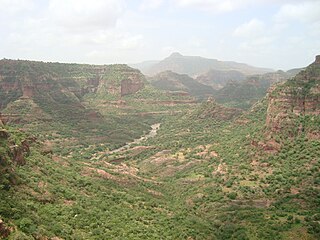
Tsaliet is a river in northern Ethiopia, belonging to the Nile basin. Rising in the mountains of Dogu’a Tembien, where it is first called May Leiba River and then Tinsehe River, it flows westward through a deep gorge, to become Tsaliet in its lower course, where it empties in Weri’i River, just upstream of the main Weri’i bridge along the road to Adwa.
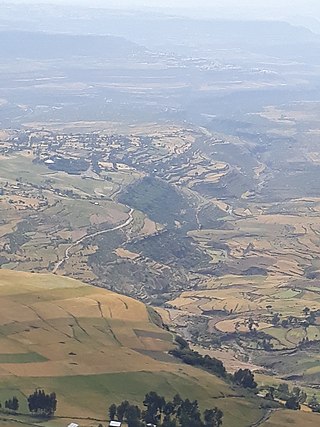
May Zegzeg is a river of the Nile basin. Rising in the mountains of Dogu’a Tembien in northern Ethiopia, it flows southward to empty finally in Giba and Tekezé River.
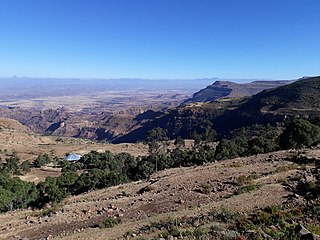
Kidane Mihret is a river of the Nile basin. Rising in the mountains of Dogu’a Tembien in northern Ethiopia, it flows northward to empty finally in Weri’i and Tekezé River.

The Azef River is a river in the Nile basin. Rising in the mountains of Dogu’a Tembien in northern Ethiopia, it flows northward to empty finally in Weri’i and Tekezé River.
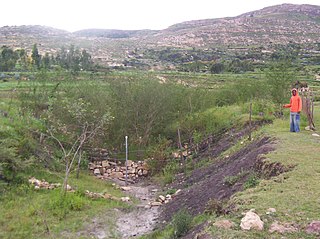
May Meqa is a river of the Nile basin. Rising in the mountains of Dogu’a Tembien in northern Ethiopia, it flows northward to empty finally in Weri’i and Tekezé River.

Tsech'i is a river of the Nile basin. Rising in the mountains of Dogu’a Tembien in northern Ethiopia, it flows westward to empty finally in Giba and Tekezé River.

May Sho’ate is a river of the Nile basin. Rising in the mountains of Dogu’a Tembien in northern Ethiopia, it flows southward to empty finally in Giba and Tekezé River.
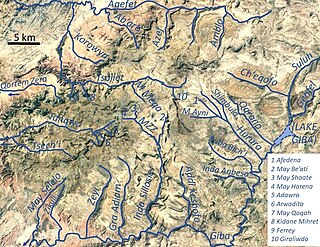
Addi Keshofo is a river of the Nile basin. Rising in the mountains of Dogu’a Tembien in Northern Ethiopia, it flows southwards to empty directly in Giba and further in Tekezé River.

Inda Anbesa is a river of the Nile basin. Rising in the mountains of Dogu’a Tembien in northern Ethiopia, it flows eastward to empty directly in Giba and further in Tekezé River.

Ruba Bich’i is a river of the Nile basin. Rising in the mountains of Dogu’a Tembien in northern Ethiopia, it flows southeastward to empty directly in Giba and further in Tekezé River.

Ch’eqofo is a river of the Nile basin. Rising in the mountains of Dogu’a Tembien in northern Ethiopia, it flows southwestward to empty finally in Giba and Tekezé River.

Agula’i is a river of northern Ethiopia. Rising in the mountains of Atsbi Wenberta, it flows southwestward to Giba River which empties finally in the Tekezé River. Future Lake Giba will occupy the plain where Sulluh, Genfel and Agula’i Rivers meet.

Genfel is a river of northern Ethiopia. Rising on the foot of the Atsbi horst at 2253 metres above sea level, it flows southwestward to Giba River which empties finally in the Tekezé River. Future Lake Giba will occupy the plain where Sulluh, Genfel and Agula'i Rivers meet.
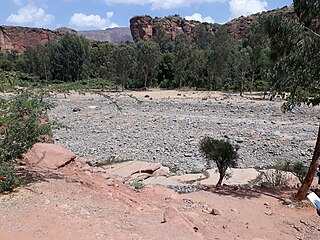
Tanqwa is a river of northern Ethiopia. Rising in the mountains of Dogu’a Tembien, it flows westward to Giba River which empties finally in the Tekezé River.

Inda Sillasie is a river of northern Ethiopia. It originates at the confluence of May Zegzeg and May Be'ati Rivers in the mountains of Dogu’a Tembien, and flows southward to Giba River which empties finally in the Tekezé River. Along its couse, it first takes the name Rubaksa River, then Dabba Hadera River, and finally Inda Sillasie River.



















